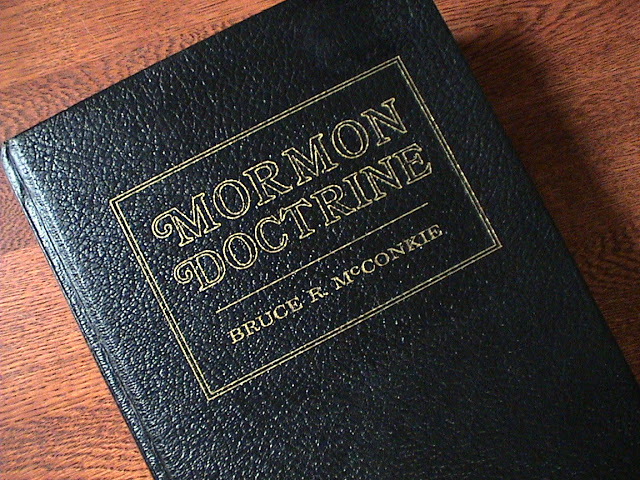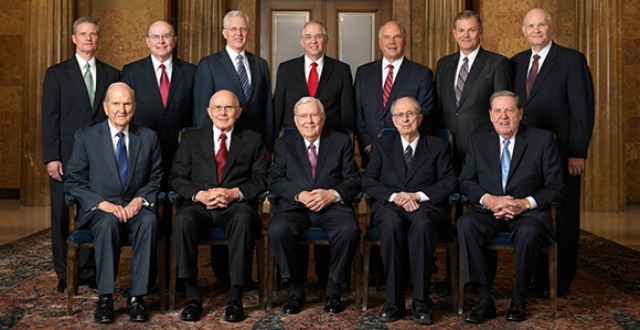Question
Dear Gramps,
I’ve heard that there are a lot of errors in both editions of McConkie’s “Mormon Doctrine.” What exactly are those errors? Furthermore, how could the Church allow him to publish a book with so many errors and call it “Mormon Doctrine”? Isn’t that a bit misleading?
Brian
Answer
Brian,
There were only a few fundamental “errors” in Mormon Doctrine (though it is controversial, so you might get a different answer from someone else). Most of the changes made from the first edition to the second were in tone. The original tone was harsh. When the book was first published it was done so without an editor or any review by the Church. Bruce R. McConkie was a Seventy at the time, and there was a bit of consternation over a Seventy speaking on behalf of the whole Church to define what was and was not doctrine. The first edition also had a lot of entries in it that defined false doctrines in other churches that were removed from the second edition because they had nothing to do with “Mormon” doctrine.
The Church did not allow him to publish it. Quite the opposite. They asked him and his publisher to pull it. Both willingly complied. Then, years later, it was reviewed and edited carefully by Spencer W. Kimball and the second edition was published.
One example of errors in Mormon Doctrine are many of the philosophies that tried to explain race and the priesthood. Some of these were corrected in later editions (after the priesthood was given to all worthy males) and some of them were never fixed but have now been officially disavowed by the Church as non-doctrinal.
Other ideas within Mormon Doctrine that might be considered non-doctrinal, however, have not been disavowed. They just have never been canonized in any manner. Therefore, it is correct to say they are non-doctrinal, but not necessarily correct to say they are mistaken.
Personally, I love the book and find the information therein very useful. I do not take the entire book as hard doctrinal fact, however, but consider it a good book to read from and learn from, with a clear understanding that some of the information might be personal opinion of the author. Many articles we currently have in the Bible Dictionary either are taken exactly from, or close to, the entries from Mormon Doctrine.
I think Mormon Doctrine is a fine example of line-upon-line thinking. Bruce R. McConkie was always willing to learn, willing to change his thoughts and teachings, and willing to grow. He freely admitted when he had been mistaken, and I have no doubt about his inspired apostleship and authority. He was also one of the most knowledgeable modern-day leaders of the Church, and we can learn a lot from him.
From the article Elder Bruce R. McConkie: “Preacher of Righteousness” we learn a few things about Elder McConkie. His prowess as a scholar:
President Ezra Taft Benson eulogized [Bruce R. McConkie] as a preacher of righteousness. “Thanks be to God that Elder McConkie’s written words of testimony remain to continue to bless a world that needs them so desperately. …
“Often when a doctrinal question came before the First Presidency and the Twelve,” he continued, “Elder McConkie was asked to quote the scripture or to comment on the matter. He could quote scripture verbatim and at great length.” He “provided the entire Church with an example of gospel scholarship. He could teach the gospel with ease because he first understood the gospel.”
…his commitment to speaking the Lord’s will:
Elder Packer spoke of the uncompromising attitude his associate had toward his obligation to speak the truth. “It was not granted to Brother McConkie to judge beforehand how his discourses would be received and then to alter them accordingly. Nor could he measure what ought to be said and how it ought to be said by ‘what will people think?’ … When he was tempted to change [his words], the Spirit would withdraw a distance. … He could stand what the critics might say and what the enemies might do, but he could not stand that.
“He would be driven to his knees to beg forgiveness and plead for the renewal of that companionship with the Spirit which the scriptures promise can be constant. Then he would learn once again that what was true of holy men of God who spake in ancient times applied to him as well. He was to speak as he was moved upon by the Holy Spirit.”
…and, concerning his understanding of mistakes and growth in the church:
On another occasion, a Church leader in South America apologized for making a procedural mistake. Elder McConkie sought to put him at ease: “President, don’t give it another thought,” he said. “In this Church we begin where we are; we begin today. We don’t look backwards; we look forward. Please don’t be concerned.”
Can we be as fair to Elder McConkie?
The equation for determining validity of doctrinal ideas from any source is fairly straightforward. Does the idea align with what our living prophets teach us? If it contradicts that, it should be discarded as false. If it doesn’t contradict, but doesn’t necessarily align either, it should be viewed as academic, non-doctrine, but interesting. If it agrees, it may be accepted as valid.
Finally I want to bear my testimony of Bruce R. McConkie’s apostleship. If you have not heard it, I recommend you watch his final testimony in the April 1985 General Conference. His witness of Christ is truly remarkable.
“I am one of his witnesses, and in a coming day I shall feel the nail marks in his hands and in his feet and shall wet his feet with my tears.
But I shall not know any better then than I know now that he is God’s Almighty Son, that he is our Savior and Redeemer, and that salvation comes in and through his atoning blood and in no other way.”
Truly this is a man who grew in testimony and understanding, as we all must do in our lives.
Gramps







